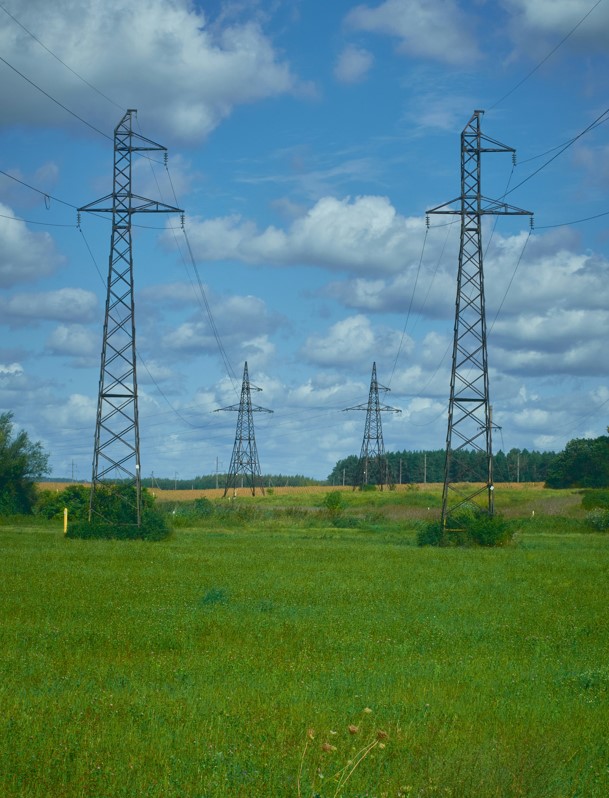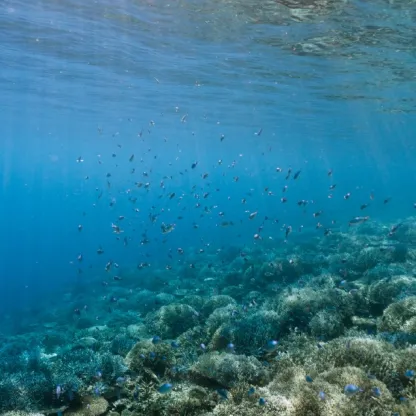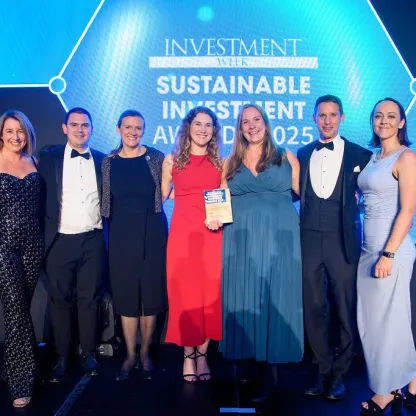Markets proved
resilient to their
April losses and
strengthened
through to the end
of the quarter.

Q2 2025 Market commentary
Article last updated 16 July 2025.
The second quarter of 2025 opened with a raft of baseline and reciprocal trade tariffs announced on President Trump’s self-styled “Liberation Day". Executive Order 14257 declared a national emergency over “large and persistent” trade deficits, invoking the International Emergency Economic Powers Act (IEEPA) to impose significant tariffs on foreign goods. The implementation of baseline tariffs on 5 April prompted a global market sell-off which accelerated when reciprocal tariffs were imposed on 57 countries four days later. Amid retaliatory threats from China to limit global rare earth and semiconductor exports, markets priced in anticipated supply chain disruptions through the continuing tariff news cycle in April, exerting significant pressure on the automotive and tech sectors in particular. Designed to “rectify” longstanding US trade imbalances, the Trump administration’s actions were roundly criticised by trade analysts and economists citing flawed economic reasoning and an overly simplistic calculation method.
Volatility spiked again in June when Israel launched a surprise attack on Iranian nuclear and military targets, augmented by US strikes later in the month. Iranian threats to close the Strait of Hormuz – a vital conduit for the shipment of global oil supplies – prompted a major spike in the cost of Brent crude and escalated concerns of a widening conflict in the Middle East. A tentative ceasefire in the “12-day war” helped to stabilise the market but concerns over future prices and supplies remained. Among fluctuating commodities and widespread economic uncertainty, gold saw a surge in investment, averaging $3,284 per ounce over the quarter and reaching a record trading high of $3,500 per ounce.
However, markets stabilised and rallied through the quarter as trade tensions eased. The US and UK brokered a deal which removed many of the universal 25% tariffs on traded goods, though the 10% baseline imposed under the IEEPA was held. A temporary trade détente was reached with China in May when the US agreed to cut its 145% minimum tariff on Chinese goods to 30% for 90 days and China responded in kind, reducing its retaliatory tariff to just 10%. The announcement of the 90-day deal coincided with the largest single-day trading gain for the S&P 500 since 2008. Additional tariff exemptions were extended to smartphones and computers, and as the quarter ended the original expiration date for country-specific 90-day deals was pushed back from early July to 1 August. While the US appeared to be signalling a greater degree of tariff flexibility ahead of Q3 talks, the full impact of increased duties is likely to become more apparent later in 2025.
Trump’s tariffs weren’t immune to legal challenges at home. In late May, the US Court of International Trade ruled the president had overstepped his authority in invoking the IEEPA and ordered the termination of the “Liberation Day” tariffs. The United States Court of Appeals for the Federal Circuit nevertheless allowed the tariffs to remain in place while it considered the administration’s appeal.
Equity markets proved resilient to their April losses and strengthened through to the end of the quarter. The S&P 500 finished Q2 up 10.94%, buoyed by conciliatory trade talks and better-than-expected US inflation figures. The rebound was less spectacular across UK and European equity markets but still resulted in comfortable gains. The FTSE 100 rose 3.19% thanks to strong performance across the industrial, telecoms, utilities and real estate sectors outstripping underperformance in energy and healthcare. Industrial and real estate growth also helped the Euro STOXX 50 to a 3.15% gain while defence stocks rallied on the news that EU member states would commit more to regional defence spending. In Japan, positive developments in trade negotiations with China and ongoing corporate governance reforms spurred investor sentiment and helped the Nikkei 225 return 13.87% over the quarter.
UK and European central banks cut interest rates during Q2 while the focus in the US shifted from inflation to the long-term sustainability of Federal finances – the budget reconciliation objectives of the administration’s One Big Beautiful Bill Act could add over $3 trillion to US Federal debt over the next decade.
UK energy summit equates energy security to national security
In April, the UK government partnered with the International Energy Agency to convene the first global summit on the future of energy security. Business leaders and ministers and high-level officials from 60 countries were addressed by the prime minister and the president of the European Commission who both stressed the parallels between energy security and national security, urging greater cooperation to accelerate the global transition to clean energy.
Sir Keir Starmer insisted that the UK’s overreliance on volatile international fossil fuel markets increased the vulnerability of working people and the wider economy. Taking aim at recent criticism of the government’s commitment to net zero, Starmer told delegates that boosting renewable energy generation was core to securing the UK’s future prosperity and would protect critical infrastructure, energy networks and key supply chains. Government confidence on net zero followed the Climate Change Committee’s latest carbon budget which took a more “pro-market” approach to policy advice, giving governments more latitude to adjust for unexpected circumstances or innovations in the private sector.
Delegates also discussed the increasing “weaponisation” of fossil fuel supplies during conflicts and how progressing the energy transition would reduce geopolitical exposures and mitigate climate risks. A notable dissenter was US Department of Energy representative Tommy Joyce who argued that “abstract” net zero targets threatened national security interests, while China’s domination of the rare earths and minerals markets risked escalating low-carbon technology costs. Though China wasn’t represented at the summit, President Xi Jinping spoke at a separate meeting convened by the UN, criticising US protectionism and positioning China as a principal driver of global climate action, claiming the country had built the world’s fastest-growing renewable energy systems and “the largest and most complete new energy industrial chain".
Global ocean conferences secure key maritime protection pledges but highlight significant financing gaps
In June, 15,000 attendees and more than 60 heads of state convened in Nice for the third UN Ocean Conference (UNOC3) looking to agree terms for multilateral commitments to protect and preserve the world’s oceans. Over 3 billion people depend directly on oceans for their livelihoods, but excessive exploitation, insufficient conservation and rising temperatures have contributed to a major decline in marine health and resource capacity.
More than 190 countries adopted the Kunming-Montreal Global Biodiversity Framework (GBF) in 2022, requiring the effective conservation or restoration of at least 30% of the world’s terrestrial and aquatic areas by 2030. However, a 2024 report supported by the Bloomberg Ocean Fund determined that only 2.8% of the world’s oceans were “effectively” protected, while just 8% had been designated as Marine Protected Areas (MPAs).
The conference saw more countries ratify the UN High Seas Treaty – the first to protect and conserve global marine biodiversity – bringing the total number of ratifications closer to the 60 required for it to come into force. Several governments announced the creation or expansion of territorial MPAs while others backed a moratorium or precautionary pause on global deep-sea mining, pending more detailed research on its environmental impacts. Public development banks established a new €3 billion financing target to tackle ocean plastic pollution under the Clean Oceans Initiative and the European Commission pledged €1 billion to support ocean conservation and sustainable fishing.
Prior to UNOC3, the tenth Our Ocean Conference in Busan, South Korea, secured 277 funding commitments totalling $9.1 billion to support measurable and impactful actions across six core themes: marine protected areas (MPAs); sustainable blue economies; climate change; maritime security; sustainable fisheries; and marine pollution. An additional $1 billion was pledged to scale up an evolving “digital oceans” programme using satellite imagery and AI to monitor and catalogue ocean sustainability data. Despite significant progress on funding, experts from The Ocean Protection Deficit identified a $14.6 billion shortfall in annual funding for ocean safeguarding to 2030 – the UN estimates that $175 billion a year is needed for effective ocean conservation.
Report shows more European companies are lobbying for stronger climate action
Despite efforts by European industry associations to downsize the remit and scope of EU climate legislation, a report generated by InfluenceMap, an NGO focused on promoting transparency on lobbying activity, indicated that corporations were increasingly supportive of science-based climate action and the wider ambitions of the EU’s Green Deal. Analysts argued that growing corporate alignment with European climate goals reflected a “profound shift” in the region’s business dynamic, challenging a persistent narrative that green legislation impeded global competitiveness. Noting a major increase in the share of companies aligned with pathways to meet global climate goals or active with science-based climate policy engagement, InfluenceMap concluded that rising corporate support for robust climate policies “likely reflects the long-term nature of corporate investment cycles that are not easily swayed by shorter-term political developments".
Cross-sector industry associations advocating for European business interests have exerted significant pressure on the European Commission to backtrack on its climate commitments and slow the pace of Europe’s energy transition. InfluenceMap’s findings argued that corporate resistance to the Commission’s agenda was inconsistent with the analysis of the Intergovernmental Panel on Climate Change (IPCC), the sustainability-aligned recommendations of the 2024 Draghi report on EU competitiveness, and the growing climate policy leadership of corporations in energy, industrial, and consumer staples sectors.




